Opinion & Analysis
Where does the golf ball go from here?
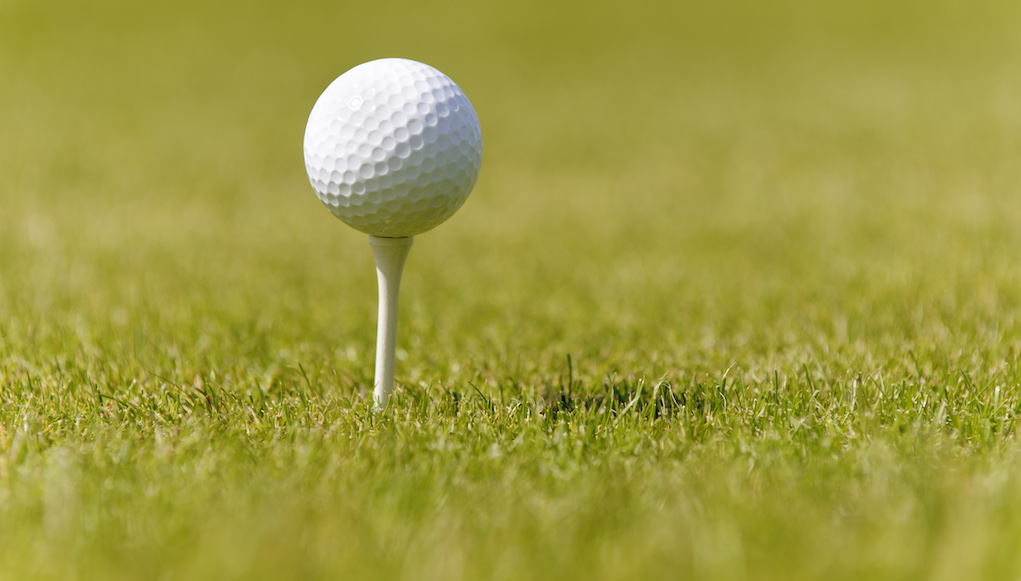
According to an unusual statistic I came across recently there are 2,378 golf balls in the air during any given second around the world. Or to extend that out, it equates to 75 billion seconds of golf ball “airtime” per year. So it’s true golf balls play a significant role to golfers.
Right now there’s a lot of buzz in the ball market with big claims being made from a raft of new entrants. New models claim to be longer off the tee and offer more spin from short range while suppling buttery softness and feel. The industry standard premium ball, Titleist’s Pro V1, has consistently led the way in terms of performance since its launch in 2000. Bridgestone, Callaway, Srixon and TaylorMade are also competing at the top end of the market, which is defined at up to $4 per ball.
But imagine getting all that performance at a fraction of that price? Golfers are starting to sit up and take notice. Should Titleist and the other premium golf ball manufacturers be quaking in their corporate boots? And where does golf ball evolution go from here?
Who Makes the Best Golf Balls?
The ideal ball is one that maximizes distance through low spin with the driver, minimizes the effect of wind, stays straight on off-center hits and spins when it hits the green and offer the right feel.
If you ask Tiger Woods what the best golf balls are, he would say Bridgestone (he’s a brand endorser and uses the company’s B330S). Jordan Speith would say Titleist (he uses a ProV1x) and Phil Mickelson would say Callaway (he uses a Chrome Soft). If you ask a 20-handicap golfer the same question, he or she would probably say any number of brands and balls. And it’s not simply an endorsement issue; it comes down to the requirements of the player. In other words, what ball best suits a golfer’s needs in terms of performance… and of course, what’s the price?
It’s kind of like asking who makes the best beer. It’s a topic that sparks ongoing debate in bars all round the world, because everyone has their own favorite. It’s the same with golf balls. Brand loyalty and marketing play a big part in a golfer’s purchasing decision, and improvements in technology have made “the best ball” hard to define.
One thing is for sure, the market is certainly evolving. With the news that Rory McIlroy has chosen to return to Titleist’s Pro V1x golf ball and Bubba Watson will play Volvik’s S4 in pink, we are seeing success by both new and old brands.
Trending Technologies
There is so much technology behind golf balls these days. Polymers and associated materials are advancing at rapid rates, and computer aided design is enabling a better understanding of aerodynamics and performance. Manufacturing is getting more sophisticated and ball-testing technology can optimize the effects of dimples size and shape, spin, attack angles and aerodynamics.
The theory that every player is different is substantiated by Bridgestone, which has invested heavily in its golf-ball testing research and has more than two million swings in its database.
“Getting fitted for your ball is like getting fitted for your driver,” says Adam Rehberg, Bridgestone’s Head of Golf Ball Fitting. “Swing speed, launch angles and spin rates will point you toward a specific ball to optimize your goals. We are very enthusiastic at Bridgestone, as we don’t just make one ball. We are constantly pushing boundaries, and being part of a conglomerate, Bridgestone Golf balls has access to a ton of R&D from Bridgestone Tires. Polymers being used on tires today will undoubtedly be put into play by Bridgestone Golf.”
One Ball for One Swing?
According to Bridgestone’s swing database research, we are all different and swing a golf club differently.
“We gather real golfer data, not just generated from a robot,” Rehberg says. “We realize that people will not hit the ball perfectly. They will have different swing speeds, attack angles and face angles. Golfers should play a profile of ball that meets their needs that will optimize their performance, be that a slower swing speed or better feel round the green.”
But this tee-to-green strategy is different from Titleist’s recent advertising campaigns that say either its Pro V1 or Pro V1x will be the best-performing Titleist golf ball for golfers whatever their level of play.
Titleist takes a green-to-tee approach in its golf ball development and fitting, which involves an evaluation of all shots on the golf course. The greatest emphasis is placed on shots into and around the green, because “the golf ball that performs best on these shots is your key to lower scores,” the company says.
“Many golfers are led to believe they should be fit for a golf ball based solely on their driver swing speed,” the company says. “This is a flawed approach. The truth is golfers use a wide range of swing speeds to execute the vast array of shots required in every round. The golf ball must perform with every club, at every speed, on every shot.”
So in theory, a 20-handicap golfer can play exactly the same ball as their golfing idol does. But who is right?
New Players in the Market
In recent years, the golf ball industry has become packed with new entrants and existing companies that have created an ever-expanding array of models. New players like Vice, Snell, MG and Kirkland are offering urethane-covered golf balls at significantly lower prices. Test data and on-course feedback from golfers suggest that the technology gap is narrowing and more direct-to-market channels enable these companies to reduce overheads.
Judging by some social media-generated player feedback and by sales of these new entrants, golfers are buying into the price-performance deal. And then you have companies like Volvik with their new S3/S4 balls available now in different colors, not to mention Callaway’s success with its Chrome Soft Truvis golf balls, which have soccer ball-like graphics and sold so well Callaway struggled to meet demand.
New Ways to Buy Balls
Balls are also more likely to be bought online rather than through a pro shop these days.
“Trends are showing that consumers are more comfortable buying stuff on their mobile devices” said Elliot Mellow, Bridgestone’s Head of Golf Ball Fitting. “We have changed our channel model selling more direct online through our own website and partner websites and anticipate that to grow.”
It’s easy to see how technology can push down golf ball prices. There are already scenarios in the future that see a drone delivering a consignment of balls to the first tee before you play, presumably ordered on your smart phone that day.
The Golf Ball of the Future
So how will the golf ball of the future differ? It took 200 years for the featherie to make it to the guttie. How long will we have to wait for the next generation breakthrough?
Talking to Dean Snell is a fascinating insight into ball technology, history and engineering. He worked at Titleist to develop the Pro V1 and then at TaylorMade to design its Penta golf balls. Now he heads up his own golf ball company, Snell Golf, and is adamant that the ball regulations are so tight now that the distance feature has been maxed out.
“The area to focus in on now is from 150 yards and in,” he said. “And essentially that means spin rates.” And he doesn’t just focus on balls for pro golfers. At TaylorMade, he was behind its Noodle, Burner, RocketBallz and Project (a) golf balls, which were designed to perform for average golfers.
Snell says many golfers are being mis-sold on the concept that they need a lower-compression ball for slower swing speeds, believing that it will give them greater distance.
“Based on a 100 mph swing hitting the ball 250 yards, a low-compression ball will only add about one extra yard of distance compared to a higher compression ball,” he says. “But this tiny pick-up in distance is completely offset with lack of feel and ability to spin the ball on or around the green. In order to get enough backspin, you have to have a big enough contact area and you have to have the cover going into the grooves. A very hard ball, even if it had a soft cover, it wouldn’t be interacting with very many grooves, so you do actually need it to deform a certain amount.”
Bridgestone, on the other hand, is adamant it can help golfers hit the ball farther.
“We have invested a lot of R&D research into aerodynamics,” Elliot says. “Our ‘Dual-Dimple Pattern’ will offer less drag and shallow out the landing angle for more roll-out. We will be introducing a new dimple in 2017 that will also add stability and added forgiveness. In addition, we see next generation advances in the ball core. We are moving to a gradational-compression core technology. This will offer one-piece performance, but act like a dual core. We see this offering significant added distance.”
The ball of the future may also be optically different, be it in color or design. Like Volvik and Callaway, Bridgestone representatives see the value of color in certain ball segments, but they say it less than 5 percent of total sales. But they’re working on something novel as well.
“We are always looking at ways to help the golfer and I have a new optics-driven concept ball sitting in my desk right now that we are very excited about,” Elliot says. “It will be very different than anything else on the market. It is still in the R&D stage and will involve a different manufacturing process, but it could be available on the market in 2017.”
Is It All Just a Load of Balls?
Lots of golfers couldn’t care less about what ball they play, especially if they are at the beginner or less-advanced stage. Given that they will be donating a lot of balls per round to the local wildlife, they want something that delivers price performance. After all, they can hit a TaylorMade just as far into the woods as they can hit a Top Flight. But there are differences in performance between brands and models. How much of it is a placebo effect? We all love our golf brands and are passionate about how much superior they are to the competition… but we say the same about our beer, our cars, our phones and everything else.
To succeed in the golf ball business is all about winning user acceptance and distribution. The barriers to entry have diminished a lot over the last 10 years. If Microsoft or Apple decided to muscle in, it would become very interesting indeed.
So you can wrap yourself up in all the ball technology you want. Heck, I’m a lifelong marketing guy; I know how it all works. But the truth is play the ball you’re most comfortable using, one that matches your skill level, personality and pocket.
Bubba summed it up pretty well in his recent signing with Volvik. “As long as the performance differences are not huge, I can have a lot more fun hitting a pink golf ball, so why not?”
- LIKE181
- LEGIT17
- WOW10
- LOL7
- IDHT2
- FLOP3
- OB4
- SHANK15
19th Hole
Vincenzi’s LIV Golf Singapore betting preview: Course specialist ready to thrive once again

After another strong showing in Australia, LIV Golf will head to Sentosa Golf Club in Singapore looking to build off of what was undoubtedly their best event to date.
Sentosa Golf Club sits on the southern tip of Singapore and is one of the most beautiful courses in the world. The course is more than just incredible scenically; it was also rated 55th in Golf Digest’s top-100 courses in 2022-2023 and has been consistently regarded as one of the best courses in Asia. Prior to being part of the LIV rotation, the course hosted the Singapore Open every year since 2005.
Sentosa Golf Club is a par 71 measuring 7,406 yards. The course will require precise ball striking and some length off the tee. It’s possible to go low due to the pristine conditions, but there are also plenty of hazards and difficult spots on the course that can bring double bogey into play in a hurry. The Bermudagrass greens are perfectly manicured, and the course has spent millions on the sub-air system to keep the greens rolling fast. I spoke to Asian Tour player, Travis Smyth, who described the greens as “the best [he’s] ever played.”
Davis Love III, who competed in a Singapore Open in 2019, also gushed over the condition of the golf course.
“I love the greens. They are fabulous,” the 21-time PGA Tour winner said.
Love III also spoke about other aspects of the golf course.
“The greens are great; the fairways are perfect. It is a wonderful course, and it’s tricky off the tee.”
“It’s a long golf course, and you get some long iron shots. It takes somebody hitting it great to hit every green even though they are big.”
As Love III said, the course can be difficult off the tee due to the length of the course and the trouble looming around every corner. It will take a terrific ball striking week to win at Sentosa Golf Club.
In his pre-tournament press conference last season, Phil Mickelson echoed many of the same sentiments.
“To play Sentosa effectively, you’re going to have a lot of shots from 160 to 210, a lot of full 6-, 7-, 8-iron shots, and you need to hit those really well and you need to drive the ball well.”
Golfers who excel from tee to green and can dial in their longer irons will have a massive advantage this week.
Stat Leaders at LIV Golf Adelaide:
Fairways Hit
1.) Louis Oosthuizen
2.) Anirban Lahiri
3.) Jon Rahm
4.) Brendan Steele
5.) Cameron Tringale
Greens in Regulation
1.) Brooks Koepka
2.) Brendan Steele
3.) Dean Burmester
4.) Cameron Tringale
5.) Anirban Lahiri
Birdies Made
1.) Brendan Steele
2.) Dean Burmester
3.) Thomas Pieters
4.) Patrick Reed
5.) Carlos Ortiz
LIV Golf Individual Standings:
1.) Joaquin Niemann
2.) Jon Rahm
3.) Dean Burmester
4.) Louis Oosthuizen
5.) Abraham Ancer
LIV Golf Team Standings:
1.) Crushers
2.) Legion XIII
3.) Torque
4.) Stinger GC
5.) Ripper GC
LIV Golf Singapore Picks
Sergio Garcia +3000 (DraftKings)
Sergio Garcia is no stranger to Sentosa Golf Club. The Spaniard won the Singapore Open in 2018 by five strokes and lost in a playoff at LIV Singapore last year to scorching hot Talor Gooch. Looking at the course setup, it’s no surprise that a player like Sergio has played incredible golf here. He’s long off the tee and is one of the better long iron players in the world when he’s in form. Garcia is also statistically a much better putter on Bermudagrass than he is on other putting surfaces. He’s putt extremely well on Sentosa’s incredibly pure green complexes.
This season, Garcia has two runner-up finishes, both of them being playoff losses. Both El Camaleon and Doral are courses he’s had success at in his career. The Spaniard is a player who plays well at his tracks, and Sentosa is one of them. I believe Sergio will get himself in the mix this week. Hopefully the third time is a charm in Singapore.
Paul Casey +3300 (FanDuel)
Paul Casey is in the midst of one of his best seasons in the five years or so. The results recently have been up and down, but he’s shown that when he’s on a golf course that suits his game, he’s amongst the contenders.
This season, Casey has finishes of T5 (LIV Las Vegas), T2 (LIV Hong Kong), and a 6th at the Singapore Classic on the DP World Tour. At his best, the Englishman is one of the best long iron players in the world, which makes him a strong fit for Sentosa. Despite being in poor form last season, he was able to fire a Sunday 63, which shows he can low here at the course.
It’s been three years since Casey has won a tournament (Omega Dubai Desert Classic in 2021), but he’s been one of the top players on LIV this season and I think he can get it done at some point this season.
Mito Pereira +5000 (Bet365)
Since Mito Pereira’s unfortunate demise at the 2022 PGA Championship, he’s been extremely inconsistent. However, over the past few months, the Chilean has played well on the International Series as well as his most recent LIV start. Mito finished 8th at LIV Adelaide, which was his best LIV finish this season.
Last year, Pereira finished 5th at LIV Singapore, shooting fantastic rounds of 67-66-66. It makes sense why Mito would like Sentosa, as preeminent ball strikers tend to rise to the challenge of the golf course. He’s a great long iron player who is long and straight off the tee.
Mito has some experience playing in Asia and is one of the most talented players on LIV who’s yet to get in the winner’s circle. I have questions about whether or not he can come through once in contention, but if he gets there, I’m happy to roll the dice.
Andy Ogletree +15000 (DraftKings)
Andy Ogletree is a player I expected to have a strong 2024 but struggled early in his first full season on LIV. After failing to crack the top-25 in any LIV event this year, the former U.S. Amateur champion finally figured things out, finished in a tie for 3rd at LIV Adelaide.
Ogletree should be incredible comfortable playing in Singapore. He won the International Series Qatar last year and finished T3 at the International Series Singapore. The 26-year-old was arguably the best player on the Asian Tour in 2023 and has been fantastic in the continent over the past 18 months.
If Ogletree has indeed found form, he looks to be an amazing value at triple-digit odds.
- LIKE3
- LEGIT3
- WOW1
- LOL2
- IDHT0
- FLOP2
- OB0
- SHANK0
Opinion & Analysis
Ryan: Lessons from the worst golf instructor in America

In Tampa, there is a golf course that boasts carts that do not work, a water range, and a group of players none of which have any chance to break 80. The course is overseen by a staff of crusty men who have succeeded at nothing in life but ending up at the worst-run course in America. However, this place is no failure. With several other local courses going out of business — and boasting outstanding greens — the place is booked full.
While I came for the great greens, I stayed to watch our resident instructor; a poor-tempered, method teacher who caters to the hopeless. At first, it was simply hilarious. However, after months of listening and watching, something clicked. I realized I had a front-row seat to the worst golf instructor in America.
Here are some of my key takeaways.
Method Teacher
It is widely accepted that there are three types of golf instructors: system teachers, non-system teachers, and method teachers. Method teachers prescribe the same antidote for each student based on a preamble which teachers can learn in a couple day certification.
Method teaching allows anyone to be certified. This process caters to the lowest caliber instructor, creating the illusion of competency. This empowers these underqualified instructors with the moniker of “certified” to prey on the innocent and uninformed.
The Cult of Stack and Jilt
The Stack and Tilt website proudly boasts, “A golfer swings his hands inward in the backswing as opposed to straight back to 1) create power, similar to a field goal kicker moving his leg in an arc and 2) to promote a swing that is in-to-out, which produces a draw (and eliminates a slice).”
Now, let me tell you something, there is this law of the universe which says “energy can either be created or destroyed,” so either these guys are defying physics or they have no idea what they are taking about. Further, the idea that the first move of the backswing determines impact is conjecture with a splash of utter fantasy.
These are the pontifications of a method — a set of prescriptions applied to everyone with the hope of some success through the placebo effect. It is one thing for a naive student to believe, for a golf instructor to drink and then dispel this Kool-Aid is malpractice.
Fooled by Randomness
In flipping a coin, or even a March Madness bet, there is a 50-50 chance of success. In golf, especially for new players, results are asymmetric. Simply put: Anything can happen. The problem is that when bad instructors work with high handicappers, each and every shot gets its own diagnosis and prescription. Soon the student is overwhelmed.
Now here’s the sinister thing: The overwhelming information is by design. In this case, the coach is not trying to make you better, they are trying to make you reliant on them for information. A quasi Stockholm syndrome of codependency.
Practice
One of the most important scientists of the 20th century was Ivan Pavlov. As you might recall, he found that animals, including humans, could be conditioned into biological responses. In golf, the idea of practice has made millions of hackers salivate that they are one lesson or practice session from “the secret.”
Sunk Cost
The idea for the worst golf instructor is to create control and dependency so that clients ignore the sunk cost of not getting better. Instead, they are held hostage by the idea that they are one lesson or tip away from unlocking their potential.
Cliches
Cliches have the effect of terminating thoughts. However, they are the weapon of choice for this instructor. Add some hyperbole and students actually get no information. As a result, these players couldn’t play golf. When they did, they had no real scheme. With no idea what they are doing, they would descend into a spiral of no idea what to do, bad results, lower confidence, and running back to the lesson tee from more cliches.
The fact is that poor instruction is about conditioning players to become reliant members of your cult. To take away autonomy. To use practice as a form of control. To sell more golf lessons not by making people better but through the guise that without the teacher, the student can never reach their full potential. All under the umbrella of being “certified” (in a 2-day course!) and a melee of cliches.
This of course is not just happening at my muni but is a systemic problem around the country and around the world, the consequences of which are giving people a great reason to stop playing golf. But hey, at least it’s selling a lot of golf balls…
- LIKE17
- LEGIT2
- WOW0
- LOL4
- IDHT1
- FLOP2
- OB1
- SHANK21
19th Hole
Vincenzi’s 2024 Zurich Classic of New Orleans betting preview

The PGA TOUR heads to New Orleans to play the 2023 Zurich Classic of New Orleans. In a welcome change from the usual stroke play, the Zurich Classic is a team event. On Thursday and Saturday, the teams play best ball, and on Friday and Sunday the teams play alternate shot.
TPC Louisiana is a par 72 that measures 7,425 yards. The course features some short par 4s and plenty of water and bunkers, which makes for a lot of exciting risk/reward scenarios for competitors. Pete Dye designed the course in 2004 specifically for the Zurich Classic, although the event didn’t make its debut until 2007 because of Hurricane Katrina.
Coming off of the Masters and a signature event in consecutive weeks, the field this week is a step down, and understandably so. Many of the world’s top players will be using this time to rest after a busy stretch.
However, there are some interesting teams this season with some stars making surprise appearances in the team event. Some notable teams include Patrick Cantlay and Xander Schauffele, Rory McIlroy and Shane Lowry, Collin Morikawa and Kurt Kitayama, Will Zalatoris and Sahith Theegala as well as a few Canadian teams, Nick Taylor and Adam Hadwin and Taylor Pendrith and Corey Conners.
Past Winners at TPC Louisiana
- 2023: Riley/Hardy (-30)
- 2022: Cantlay/Schauffele (-29)
- 2021: Leishman/Smith (-20)
- 2019: Palmer/Rahm (-26)
- 2018: Horschel/Piercy (-22)
- 2017: Blixt/Smith (-27)
2024 Zurich Classic of New Orleans Picks
Tom Hoge/Maverick McNealy +2500 (DraftKings)
Tom Hoge is coming off of a solid T18 finish at the RBC Heritage and finished T13 at last year’s Zurich Classic alongside Harris English.
This season, Hoge is having one of his best years on Tour in terms of Strokes Gained: Approach. In his last 24 rounds, the only player to top him on the category is Scottie Scheffler. Hoge has been solid on Pete Dye designs, ranking 28th in the field over his past 36 rounds.
McNealy is also having a solid season. He’s finished T6 at the Waste Management Phoenix Open and T9 at the PLAYERS Championship. He recently started working with world renowned swing coach, Butch Harmon, and its seemingly paid dividends in 2024.
Keith Mitchell/Joel Dahmen +4000 (DraftKings)
Keith Mitchell is having a fantastic season, finishing in the top-20 of five of his past seven starts on Tour. Most recently, Mitchell finished T14 at the Valero Texas Open and gained a whopping 6.0 strokes off the tee. He finished 6th at last year’s Zurich Classic.
Joel Dahmen is having a resurgent year and has been dialed in with his irons. He also has a T11 finish at the PLAYERS Championship at TPC Sawgrass which is another Pete Dye track. With Mitchell’s length and Dahmen’s ability to put it close with his short irons, the Mitchell/Dahmen combination will be dangerous this week.
Taylor Moore/Matt NeSmith +6500 (DraftKings)
Taylor Moore has quickly developed into one of the more consistent players on Tour. He’s finished in the top-20 in three of his past four starts, including a very impressive showing at The Masters, finishing T20. He’s also finished T4 at this event in consecutive seasons alongside Matt NeSmith.
NeSmith isn’t having a great 2024, but has seemed to elevate his game in this format. He finished T26 at Pete Dye’s TPC Sawgrass, which gives the 30-year-old something to build off of. NeSmith is also a great putter on Bermudagrass, which could help elevate Moore’s ball striking prowess.
- LIKE8
- LEGIT3
- WOW1
- LOL1
- IDHT0
- FLOP3
- OB1
- SHANK2
-

 19th Hole2 weeks ago
19th Hole2 weeks agoJustin Thomas on the equipment choice of Scottie Scheffler that he thinks is ‘weird’
-

 19th Hole2 weeks ago
19th Hole2 weeks ago‘Absolutely crazy’ – Major champ lays into Patrick Cantlay over his decision on final hole of RBC Heritage
-

 19th Hole3 weeks ago
19th Hole3 weeks agoTwo star names reportedly blanked Jon Rahm all week at the Masters
-

 19th Hole3 weeks ago
19th Hole3 weeks agoReport: LIV Golf identifies latest star name they hope to sign to breakaway tour
-

 19th Hole3 weeks ago
19th Hole3 weeks agoNeal Shipley presser ends in awkward fashion after reporter claims Tiger handed him note on 8th fairway
-

 19th Hole2 weeks ago
19th Hole2 weeks agoBrandel Chamblee has ‘no doubt’ who started the McIlroy/LIV rumor and why
-

 19th Hole1 week ago
19th Hole1 week agoLET pro gives detailed financial breakdown of first week on tour…and the net result may shock you
-

 Equipment3 weeks ago
Equipment3 weeks agoJason Day on his recent switch into Srixon ZX5 and ZX7 Mk II irons



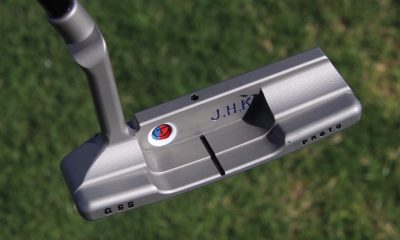



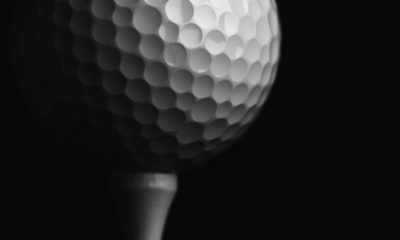

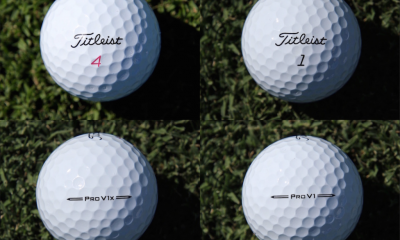

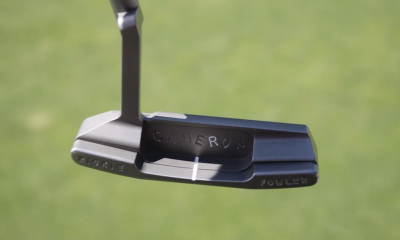

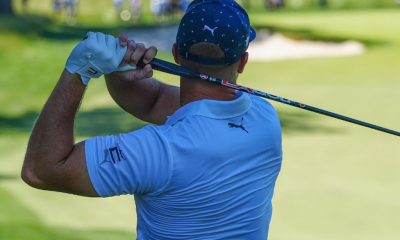
















rasel
Oct 2, 2017 at 1:54 am
its a really great idea that you have described here. thanks a lot for this best idea
Joey
Feb 23, 2017 at 2:15 pm
Is it just me or do other people just hate when you are playing with people and they will tell you ball doesn’t matter. I was playing the other day and I bought some b330s golf balls and he was wondering why I bought them instead of Top Flights that are half the price. Does anyone know something smart that i can say back to people who comment on balls that i use?
Miuralovechild
Feb 6, 2017 at 1:20 am
I can’t wait for the Sams Choice ball from Sam’s Club. They won’t let Costco dominate the ball market.
Dan
Feb 12, 2017 at 10:41 pm
more likely it will be an Amazon ball right? I’ve been buying all my golf balls from Amazon for the last year+. It’s only a matter of time before they get the same factory as Costco to make their own “prime” ball.
Eye4Golf-Albuquerque
Feb 1, 2017 at 9:31 pm
I play on city courses 95% of the time and play 3 times a week, so high end premium balls are not a good return on investment. If you play on high end courses you see some improvement if you play to a 6-12 hdcp, higher no help, lower no brainier. Last time I read the average golfer shoots in mid 90’s. I think it’s great to have such a variety of value priced quality balls Snell,Vice, Wilson Staff and others from $12-32 dozen. Duo’s yellow in winter and Kirkland rest of time are my favorites. Finding the right ball is easier and cheaper than golf clubs.
Kyle p
Feb 1, 2017 at 12:05 pm
I’ve read that article countless times with only slight variations over the years with regards to balls and clubs. It comes across as a child writing a report.
I’m asking the editor, please don’t post articles just for the sake of filling up space.
This website has always been knowledgeable and insightful and I hope that resumes in the future.
Stevegp
Feb 1, 2017 at 12:41 am
Interesting summation article. You “use” the golf ball on every shot. The ball you choose is important (IMHO). The golf ball also is the least expensive piece of equipment you purchase and one that can impact every shot, enjoyment of the game, and your performance.
S Hitter
Feb 1, 2017 at 1:28 am
No, the least expensive piece of equipment is the tee that you put your ball on
Jim
Jan 31, 2017 at 5:26 pm
Absolutely time for ‘the official tournament ball’
a barrel full on the range and every player loads their bag with them. Period. Different mfrs can sponsor events and their ‘tour compliant’ ball will be the one used that week.
let the pampered ones cry. They’ll still all have their endorsement deals on the side
george
Jan 31, 2017 at 11:54 am
Well, I’ve still got 10 dz B330-RX in the basement. I guess I’ll have to wait another two months zu select a new and improved ball… 😉
cgasucks
Jan 31, 2017 at 8:30 am
When it comes to buying new tour level quality balls, the KSig gives you the best deal for your hard earned dollars. I will count the days when it will come back (as per their Chairman’s comments).
Tim
Jan 31, 2017 at 6:23 pm
Going a little far calling the KSig a tour level ball…good ball for amateurs yes….you know the Costco ball does not or did not go through all the testing a Prov1 or other tour balls go through right…I think you will find the real threat of the KSig ball is for all the off tour balls all the big boys sell…Who would pay $22 or more for a hard cover ball if you could get a urethane ball for $15 a dozen…that is the real threat
Brian
Jan 31, 2017 at 8:40 pm
Michael Breed, is that you?
Mark
Jan 31, 2017 at 2:42 am
Hopefully more affordable. Kirkland have rocked the boat but you find a lot of golfers who want expensive and would not be seen dead with anything that wasn’t from a premium priced brand. And are off 20 and hit it all over the parish and then spend an inordinate amount of time looking for them. “It’s lost mate, this is where Elephants come to die. Not a chance…these are £3.50 each”….
JuNiOR
Jan 31, 2017 at 12:24 am
Who Makes the Best Golf Balls?
Hands down the Kirkland Signature 4 piece!!!
1. Performance
2. Price
3. Did I say price….$30.00 for 2 DOZEN
Jim
Jan 31, 2017 at 12:39 am
Your talking about an ok ball for the White Tee 15 to 20 handicapper….for a real player, one who makes birdies from the Blue or Back tees the higher end balls are going to be better…why, because the high end balls (Prov1 etc) are built to be and play better…at best with a Kirkland ball your getting a ball with play ability 5 or more years old. Fine for those that just not going to get any better..
Brian
Jan 31, 2017 at 8:43 pm
Is Titleist paying you per post or an hourly rate?
STeve S
Jan 31, 2017 at 8:52 pm
Have you seen the testing? Ksig numbers within experimental error of the 2016 Pro V1. If it’s 5 year old technology that means all the BS about new technology is just that…BS.
SV
Feb 1, 2017 at 9:53 am
A rather snarky comment. Actually a player will do his best with a ball that suits him and they don’t have to be tour level and cost $50 per dozen. Just because someone doesn’t want to pay an exorbitant price for balls doesn’t mean they can’t play. My favorite balls, which unfortunately are no longer available, are the Srixon AD333 and Callaway Diablo HX Tour. By the way, I am 68 years old, play to a 5 handicap and play to it from any set of tees.
MiloTheMarauder
Jan 30, 2017 at 8:33 pm
I’m looking forward to playing the new Chrome soft X, hopefully in Truvis.
Adam
Jan 30, 2017 at 7:01 pm
Hopefully it goes in the hole a lot more and sooner on each hole!
Geoff
Jan 30, 2017 at 1:19 pm
I’ve played the Chromax ball for about 3 years and it simply outperforms other premium balls that I’ve played. They really run out a little more on Drives, approaches and putts. Most players want more distance on their Driver and they often miss greens and putts short. Urethane balls produce more spin of the driver which causes the ball to hook or slice more and stop quickly on a good drive, while the Chromax ball is very straight and picks up a couple of extra yards. On approach shots, the urethane ball will stop and spin back; if most misses are short, you don’t want the ball to spin back. The Chromax ball takes a hop forward and then stops for me. On putts, the urethane ball grips each imperfection on the green and slows down the ball. I hate the putts you leave inches short with the perfect line—that is far less likely to happen with this ball. Pull and hit the same clubs you normally would and hit more greens and hole more putts, it’s really a no-brainer. I’m very happy with the Chromax O.V. ball.
Ian
Jan 31, 2017 at 1:42 pm
who should they make the endorsement check out to?
Geoff
Jan 31, 2017 at 5:39 pm
Ha, me I would think!